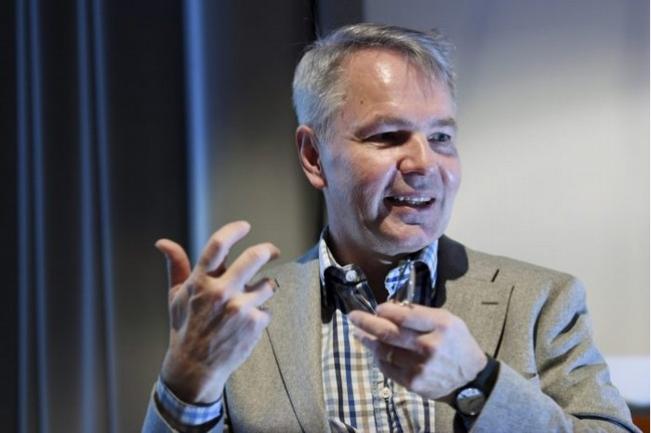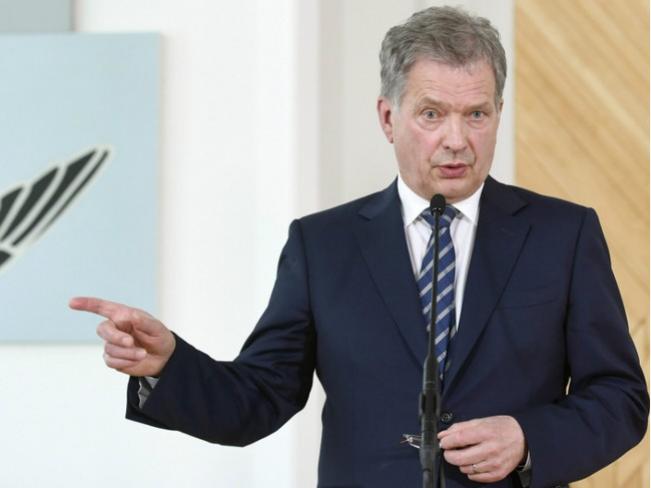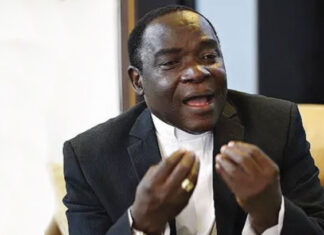By Nnanna Okere, Finland
In the presidential election in late January 2018, (with a possible second round in February), Niinisto seems quite certain to be re-elected for a second term.
As Finns go to poll early this year, it is somewhat difficult to believe that Finland is holding a presidential election on January 28. Political discussion is warm, even though the election is close at hand and eight presidential candidates are trying their best to run election campaigns.
The most common topic of speculation is whether current President Sauli Niinisto
A second round happens on February 11 if no candidate earns more than half of the vote in the first round. The next six-year presidential term begins on March 1, 2018.
No one doubts Niinisto’s re-election, as his popularity is exceptionally high. Public opinion polls show a clear majority of voters backing him.
Incumbent president and seven challengers, of all the contenders, Pekka Haavisto of the Green Party inspired 37 percent of Finnish voters when running against Niinistö in 2012, and is hoping for a good showing in 2018.
This is not merely a passing phenomenon. Niinisto has been Finland’s most popular politician since winning the largest number of votes nationally in the 1995 parliamentary election.
At 69, Niinistö has had a long political career. He was a Member of Parliament from 1987 to 2003 and from 2007 to 2011. He served as a cabinet minister from 1995 to 2003, including one year as minister of justice and seven as minister of finance. Niinist chaired the conservative National Coalition Party (NCP) from 1994 to 2001.
In the previous presidential election, in 2012, Niinisto ran as the NCP candidate. It went into a second round, where Niinisto earned 62.6 percent of the vote, while 37.4 percent went to his opponent, Green Party MP Pekka Haavisto.
Haavisto is running again, with polls showing around 10 percent support, which corresponds to the Green Party’s backing in surveys of overall party support. By contrast, the candidates of two large parties, Centre Party MP Matti Vanhanen and Social Democrat MP Tuula Haatainen, have fallen far short of their own parties’ popularity figures. Also running are Laura Huhtasaari of the populist “Finns” Party, Merja Kyllönen of the Left Alliance, Nils Torvalds of the Swedish People’s Party, and veteran politician Paavo Väyrynen, a Centre Party member who is running as an independent. Besides Niinisto and Haavisto, the other candidates’ support numbers have mostly remained below 3 percent.
Niinisto chose to run not under the NCP banner, but rather as the candidate of an unaffiliated “citizens’ movement.” Rules require such candidates to collect 20,000 signatures of support; Niinisto’s organisation raked in more than 150,000 signatures over the summer of 2017.
The president’s former party is backing his candidacy, with NCP activists taking part in the citizens’ movement. Finland’s business leaders are also strongly behind Niinisto. This was revealed in late December 2017, when a list of his largest campaign donors was released. They include Nokia’s former chair, Jorma Ollila, and current chair, Risto Siilasmaa.
So why was a citizens’ movement launched to support Niinistö? There are three important reasons.
First, when an incumbent president runs as the candidate of an independent movement, voters find it easier to vote for him or her in the first round.
Second, as the candidate of such a group, Niinistö is not obliged to take part in domestic political wrangling, which could have weakened his popularity. Niinistö has focused on foreign policy and detached himself almost entirely from the domestic political discussion.
The third reason was a difference of opinion between Niinistö and the conservative party in which he used to serve, over Finnish membership in NATO. The NCP backs efforts to join the alliance, but Niinistö does not.
If Niinistö had run on an NCP ticket, he would have had to explain this awkward contradiction.
You need to keep in mind that only one in five Finns supports applying for NATO membership, according to a public opinion poll in late 2017. In the same survey, three-quarters of respondents indicated that they were satisfied with the country’s foreign policy and the actions of the government leadership. The president received good grades; he has focused on leading the way in international relations, as the constitution specifies.
A broad consensus on foreign policy is also noticeable in the presidential campaign debates. The candidates from the largest parties – the Centre’s Vanhanen, the SDP’s Haatainen, and the Greens’ Haavisto, as well as Niinist – all agree on the most important foreign policy issues. Any differences of opinion are mere nuances.
Small-group candidates Huhtasaari, Väyrynen and Torvalds have tried to play the role of challengers. Huhtasaari and Väyrynen are EU critics, while Torvalds supports NATO membership. They have not, however, succeeded in taking over the political arena.











